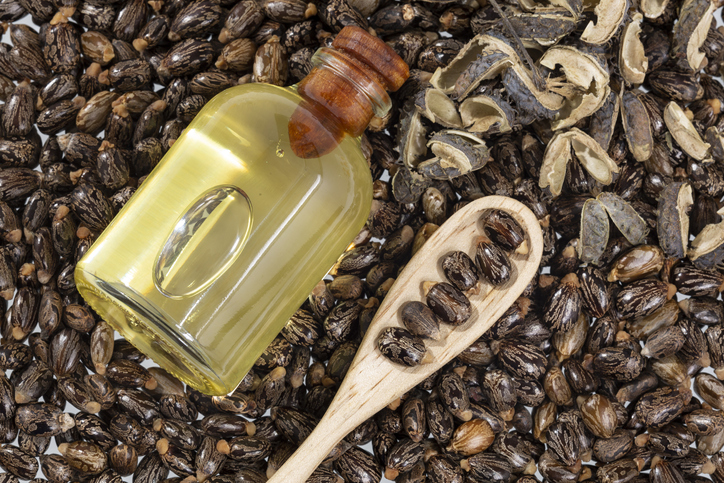Eyan Ronen is CEO at Casterra, which employs advanced breeding technologies to breed stable castor varieties that can be cultivated using mechanized agro-technical practices.
The views expressed in this guest commentary are the authors’ own and do not necessarily reflect those of AgFunderNews.
It’s tough to make a decent living as a farmer, but for a farmer in a developing country with land of mediocre quality, at best, making a decent living can be almost impossible. Millions of farmers in sub-Saharan Africa eke out a poverty-level living from marginal lands, trying to grow food that is unable to sustain life without using expensive fertilizer to replace the nutrients that are absent in those soils.
The solution for many of these farmers could be to change crops, switching from food crops to feedstock crops, used to manufacture biofuels. These energy sources are in growing demand around the world, and marginal lands are well-suited to grow them. By shifting to feedstock, farmers in developing countries will have an in-demand commodity that can help lift them up, and perhaps even over the poverty line.
The facts speak for themselves. According to the World Bank, smallholder farmers are among the poorest people in the world, living on less than $2 a day. Such farmers make up large parts of the population in sub-Saharan Africa and the Indian subcontinent, home to the world’s poorest countries.
Over 60% of all workers in sub-Saharan Africa are smallholder farmers, a McKinsey study shows; and over half of the population of the Indian subcontinent are smallholder farmers, unable to adequately cover even household expenses, studies show.
Despite progress in reducing poverty among smallholder farmers, over 2 billion people still live in poverty, 736 million of them in extreme poverty. Taken together, these facts lead to one conclusion: Subsistence farming, whether for raising food crops for family or village use or for growing cash crops, is not helping to lift the world’s poorest populations economically.
A great deal of this is due to the fact that many of these smallholder farmers are working with substandard or marginal land, lands that make up about a fifth of all available tillable land globally. Much of this land is located precisely in the areas where farmers are poorest, where the nitrogen-deficient soil does not contain the resources to grow crops that could sustain human beings.
Biofuel crops such as castor thrive on marginal lands
One major change that could help raise the incomes of farmers is for them to grow crops that can be used for biofuels. These crops, including castor, often thrive on marginal lands and require minimal support, such as fertilizers, further reducing expenses for farmers. In fact, some biofuel crops grow well in marginal soils with minimal fertilizer support and, at the same time, make the soil healthier and more nutrient-rich.
Beyond the benefits to the soil, biofuel crops can help farmers in the developing world take a greater role in the world economy, producing a product that is set to nearly double in demand by 2030. EPA mandates require increasing amounts of biofuels or biofuel mixes as substitutes for oil. And while much of that biofuel is in the form of ethanol derived from corn, other mandates will require a wider number of feedstock sources. For example, New York State recently passed a law requiring that 20% of home heating oil be derived from biofuel crops by 2030. That oil is usually diesel oil, and there are better sources for biodiesel than corn. Among the best choices for biodiesel is castor.
But beyond helping integrate farmers into producing advanced technologies for the world economy, biofuel feedstock production could have an even more significant benefit for poor farmers. Besides lacking food, poor farmers in the developing world, especially in Africa, also lack electricity. According to World Bank figures, half the population of Africa lacks access to power, and efforts to electrify the continent are woefully slow.
But with the production of large amounts of bioenergy crop feedstock that could supply power plants, African countries could more cheaply and efficiently electrify, helping raise their living standards.
According to experts, “modern bioenergy can be an agent of African transformation, with potential social benefits accruing to multiple sectors and extending well beyond energy supply,” helping the poor not only to get access to power but empowering them by enabling them to grow the feedstock for that energy source – providing them with a steady source of income, and enabling maximal efficient use of marginal lands.
Bioenergy and biofuel feedstocks are not the only way farmers can improve yields from marginal lands; the UN and other international organizations have programs to train farmers to do just that.
But bioenergy and biofuel crop feedstock production provide many benefits, both for individual subsistence smallholder farmers and their nation’s economy and energy supply. Encouraging the adoption of biofeedstock crops should be a greater part of public policy when it comes to improving agriculture and the economy in rural Africa.




